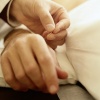Headaches are extremely common. While everyone experiences an occasional headache, statistics show that 1 out of 6 people suffer from chronic headaches.
Acupuncture can effectively relieve headaches, as well as treat their underlying causes. In fact, headaches are one of the conditions most commonly seen in acupuncture clinics today. It can offer powerful relief without the side effects that prescription and over-the-counter drugs can cause.
Headaches that can be treated with acupuncture include migraines, tension headaches, headaches occurring around the menstrual cycle, sinus headaches and stress-related headaches.
How Acupuncture Treats Headaches
Many variables are looked at in order to properly diagnose and successfully treat headaches. Each individual is treated differently depending on their unique symptoms.
Some of the factors that will determine what acupuncture points and other treatment techniques are used include: what triggers the headaches; the location, frequency and intensity of the headaches; the quality of the pain; the time of day that they occur; what helps the headaches and what makes them worse.
Types of Headaches
When treating with acupuncture, headaches are often classified by their location. This is only a broad guideline which needs to be further refined and integrated into the treatment for each individual, but this shows meridians and patterns that affect each area of the head.
Top of Head: Liver Meridian (Liver Blood Deficiency, Liver Yang Rising)
Sides of Head: Gall-Bladder Meridian (Liver-Yang, Liver-Fire or Liver-Wind Rising)
One Side Only: Gall-Bladder Meridian (Liver-Yang or Liver-Fire Rising)
Temples: Gall-Bladder Meridian (Liver-Yang, Liver-Fire or Liver-Wind Rising)
Behind the Eyes: Liver Meridian (Liver Blood Deficiency, Liver Yang Rising)
Forehead: Stomach Meridian (Stomach Deficiency or Stomach-Heat)
Back of Head (Occipital): Bladder Meridian (Kidney Deficiency or Damp-Heat in the Bladder) or External Wind
Whole Head: Kidney-Essence Deficiency or External Wind
Acupuncture can significantly relieve headaches and is an important component to managing recurring headaches and migraines. If you have any questions, please call for a consultation.
Studies Show that Acupuncture Stops Headaches
 | |
In each study, the researchers tried to establish whether acupuncture could reduce the occurrence of headaches. One study focused on mild to moderate but frequent "tension-type" headaches, whilst the other focused on more severe but less frequent headaches usually termed migraines. Together the two studies included 33 trials, involving a total of 6,736 patients.
Overall, following a course of at least eight weeks, patients treated with acupuncture suffered fewer headaches compared to those who were given only pain killers. In the migraine study, acupuncture was superior to proven prophylactic drug treatments.
In one specific study involving 270 patients, acupuncture cut tension headache rates almost in half. Researchers divided the patients who reported similarly severe tension headaches into three groups for the study. Over the project’s eight-week period, one group received traditional acupuncture, one received only minimal acupuncture (needles inserted at non-acupuncture points, and at only shallow levels), and the third group received no treatment.
Those receiving the traditional acupuncture reported headache rates of nearly half that of those who received no treatments, suffering 7 fewer days of headaches. The minimal acupuncture group suffered 6.6 fewer days, and the non-acupuncture group suffered 1.5 fewer days. When they received acupuncture after the main study period, the “no treatment” group also reported significantly fewer headache days.
The improvements continued for months after the treatments were concluded, rising slightly as time went on.
Sources:
British Medical Journal, July 2005
Acupuncture for tension-type headache. Cochrane Database of Systematic Reviews, Issue 1. Art. No.: CD007587 DOI: 10.1002/14651858.CD007587
Acupuncture for migraine prophylaxis. Cochrane Database of Systematic Reviews, 2009, Issue 1. Art.No.: CD001218 DOI: 10.1002/14651858.CD001218.pub2
7 Healthy Habits for Headache Sufferers
Diet- Eat regular meals at regular times to avoid your blood sugar from falling too quickly. Also, avoid foods and drinks that are known to trigger headache attacks including processed meats, aged cheese, alcohol, and foods and beverages that contain aspartame.
Sleep- Maintain a regular sleeping schedule, including weekends and vacations.
Stress- Stress is one of the most common headache and migraine triggers. Implement stress reduction techniques into your daily life.
Exercise- Exercise stimulates the body to release endorphins, which are brain chemicals that improve mood and relieve stress, which are known headache triggers.
Headache Diary- Keep a diary of when your headaches occur, along with any triggers, and share the information with your healthcare provider.
See Your Healthcare Provider- Make an appointment with your healthcare provider to specifically discuss your headache.
Be a Partner in Your Headache Care- Be informed, be a participant in your treatment and be an advocate for your headache care.





